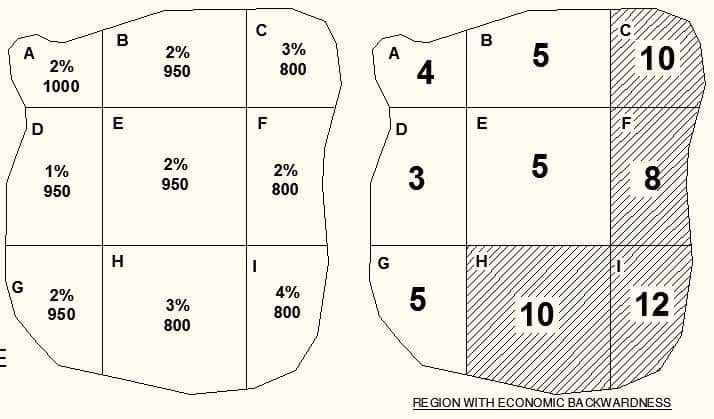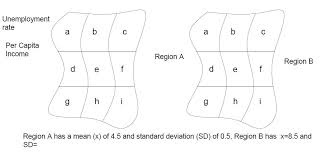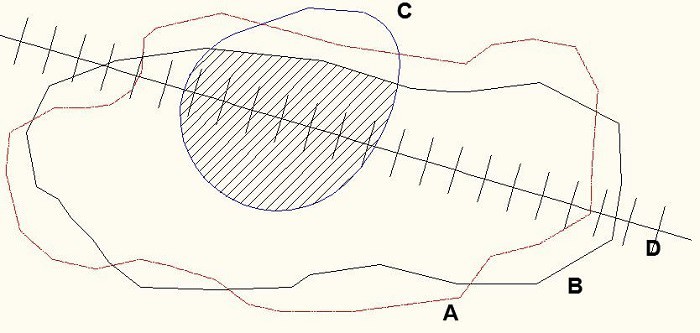To understand delineation of regions we first need to understand what are the different kinds of regions as each region on the basis of its characteristics is to be handled separately using different techniques or combination of techniques.
There are three basic kinds of regions:
- Formal region
- Functional region and
- Planning region
A formal region is a geographical region which is homogeneous and uniform within a specified criterion. This specified criterion could be social, physical or political. Example – Himalayan Region, Sub-Tropical Region, etc.
A geographical region which displays a certain functional coherence, an interdependence of parts when defined on the basis of certain criteria is known as a functional region. It is sometimes referred as nodal or polarized region and is composed of heterogeneous units such as cities, towns & villages which are functionally inter-related. Example – National Capital Region.
A planning region can be defined as a geographical region where designing and implementation of development plan is possible for tackling of regional problems. Example – Delhi Metropolitan Region.
Regional delineation is the first step in the preparation of any regional development plan to ensure tentative operational area of planning. With in the planning region the frame of all regional studies could be undertaken and development envisaged.
Delineation of formal regions involves the grouping together of local units which have similar characteristics according to certain clearly defined criteria and which differ significantly from the units outside the region on the basis of certain chosen criteria.
- The criteria can be unemployment rates, activity rate, migration trends, per capita income etc.
- The characteristics should differ significantly from units outside the region.
- Two techniques for delineation of formal regions are detailed below.
The delineation depend on the development objectives.
Variables for delineation of formal region (homogeneous):
- Land use characteristics
- Demographic characteristics
- Transport infrastructure
- Social service and public utilities
- Socio-economic structures
Methods for Delineation of formal regions
- Weighted index number methods
- Factor analysis
The Weighted Index Number Method
In this method, some indices (parameters) are chosen and given weights, total weights for each part is separately calculated and areas with similar weights are carved out. This area is termed as ‘region’.
Example:
To carve out a region of economic backwardness the parameters chosen were % of unemployment and Per capita income. Then accordingly the weights were set up. It was decided that for every 1% of unemployment 2 weights shall be assigned and setting 1000 as the base for every 50 points below 1000, 1 weight shall be assigned. Hence more is the total weight more is the backwardness.
Suppose we consider a hypothetical area divided into 9 blocks having the given unemployment percentages and per capita income. If we then apply weights to each block as stated in the previous paragraph we will find that we can hatch an area with relatively more economic backwardness.

Hence, after assigning the weights we could find that area HIFC forms the area of economic backwardness.
There are certain demerits of this method. To apply this method, the region must have proper delineated parts. This method can only be applied where quantifiable data is available and this method is not useful for delineating regions having natural/ physiographic features.
Similarly, you can use this method for employment & income level delineation
- The study area is divided into several localities varying according to unemployment rates and per capita income levels.
- The aim is to isolate the main problem region; i.e. the area of economic malaise.
- Weights are assigned to each criteria and when taken together and weighted, one of the region can be isolated.

The Factor Analysis method
In this method, each parameter is mapped out separately and then all the maps are kept one over the other. The common region that will be carved out after this exercise will form a region.
- Used for delineating economic health regions.
- Smith identified 14 industrial criteria on a local employment exchange area base and 14 socio-economic criteria on a local authority base.
- Many of these criteria are interdependent. The factor analysis method can be used to isolate these factors and to group areas on the basis of factor loadings.
- Smith identified ‘industrial change’ and industrial structure’ as major industrial factors, and ‘population change’ and ‘social structure’ as major socio-economic factors.
- These factors help in delineating economic health regions.
Example: To carve out South Eastern Mineral Region. The parameters considered were geology, minerals (coal, iron ore, bauxite, silica), availability of rail, soil, vegetation, climate, and population. Each line depicts an aspect and is called girdle.

The area which satisfied 6 girdles was carved out and was called the SE resource region. Sometimes some parts of the delineated area have administrative conflicts at those moments, adjustment is done on the basis of smallest unit of delineation method.
Two approaches of functional regionalisation
- Gravitational analysis based on theoretical observations,
- Flow analysis based on actual observation of what people do
Read about: Delineation of Functional Regions, Population Projection & Forecast